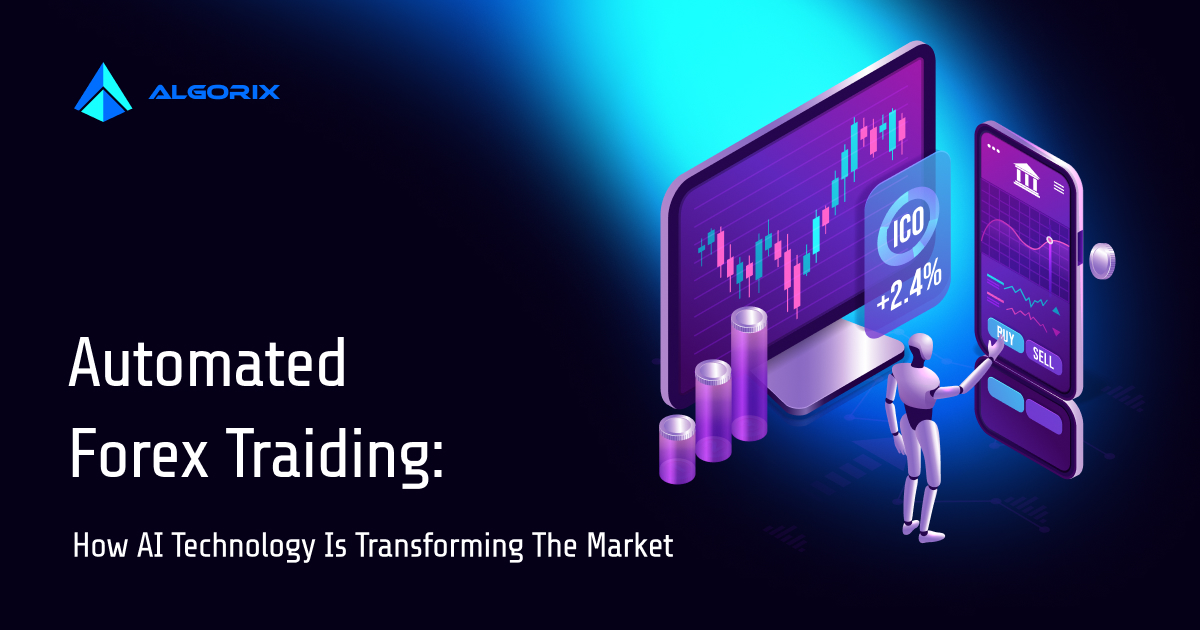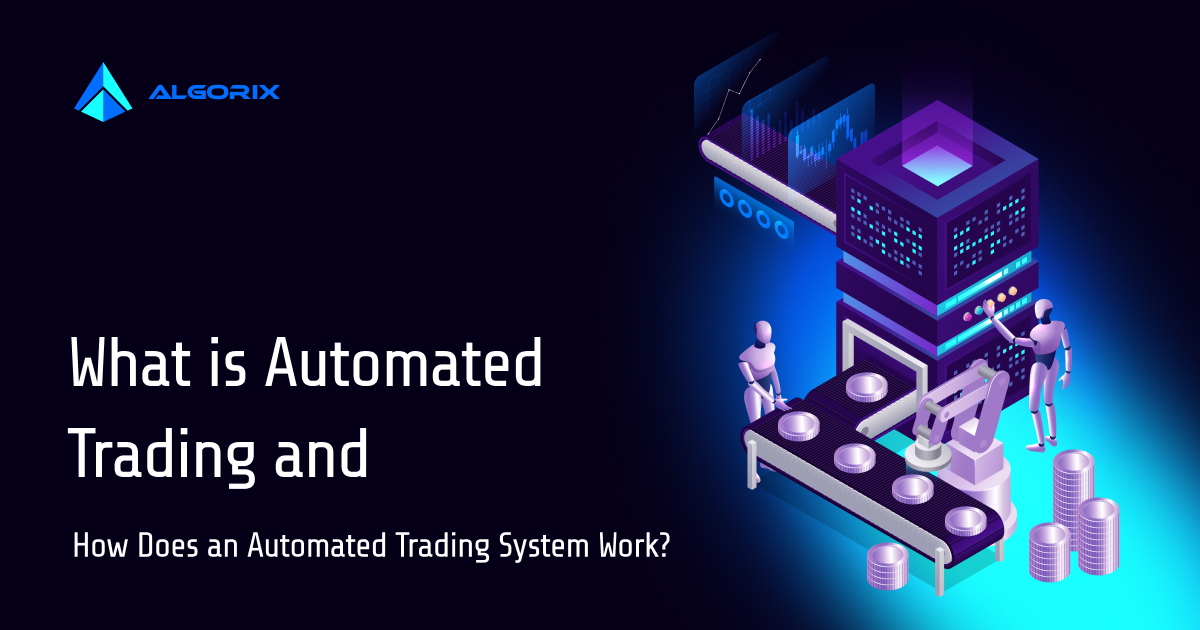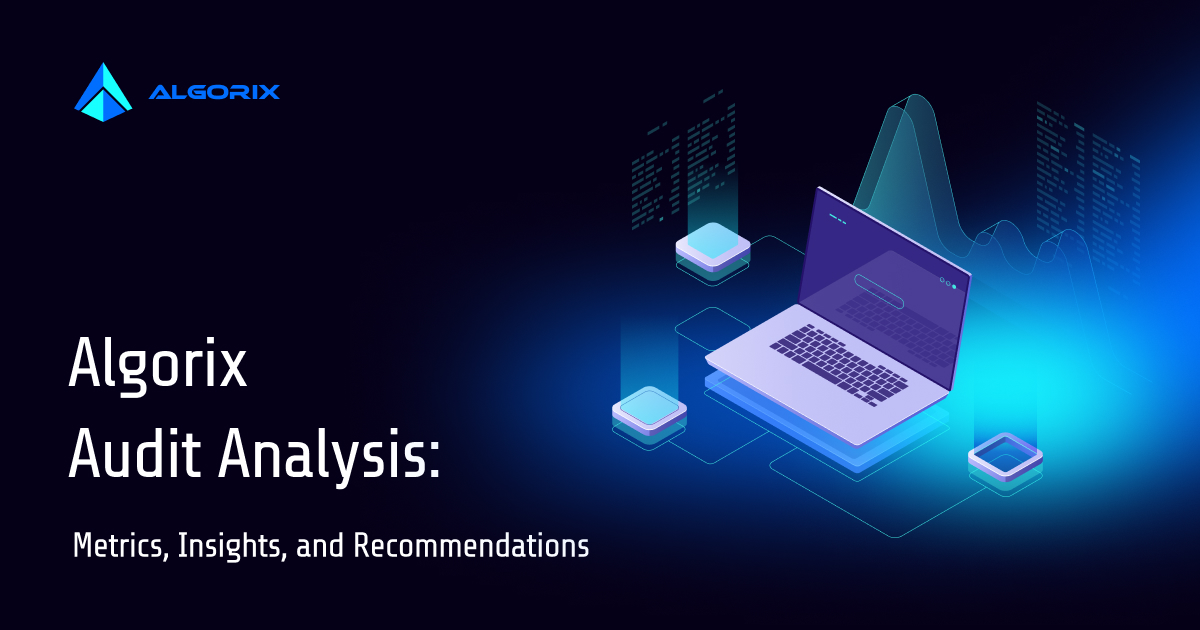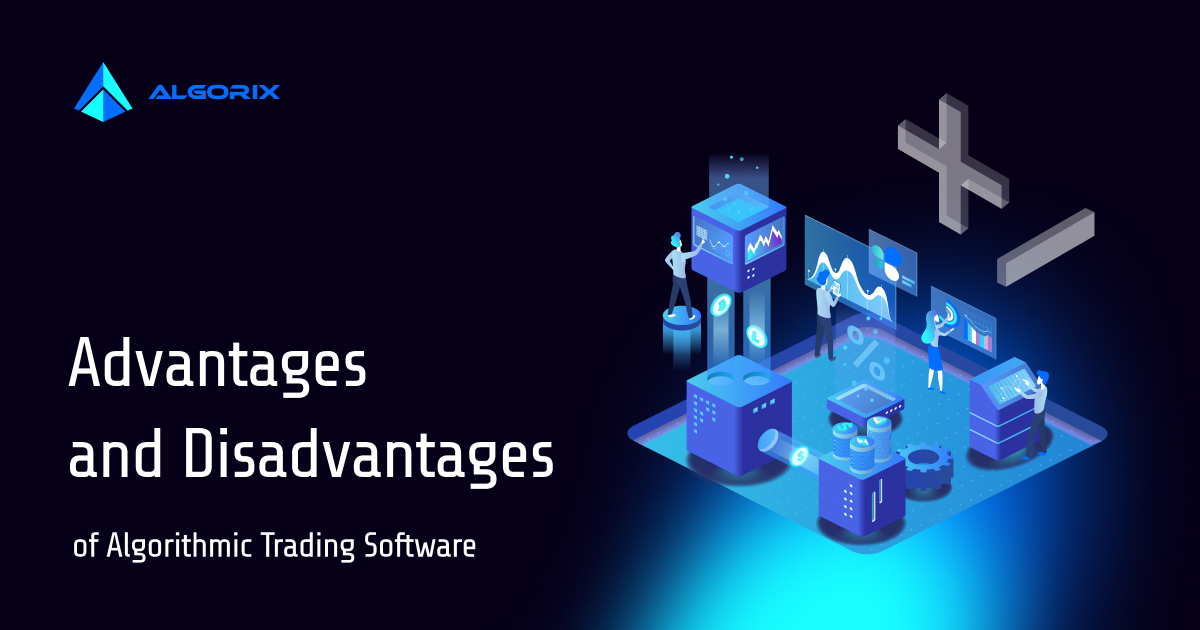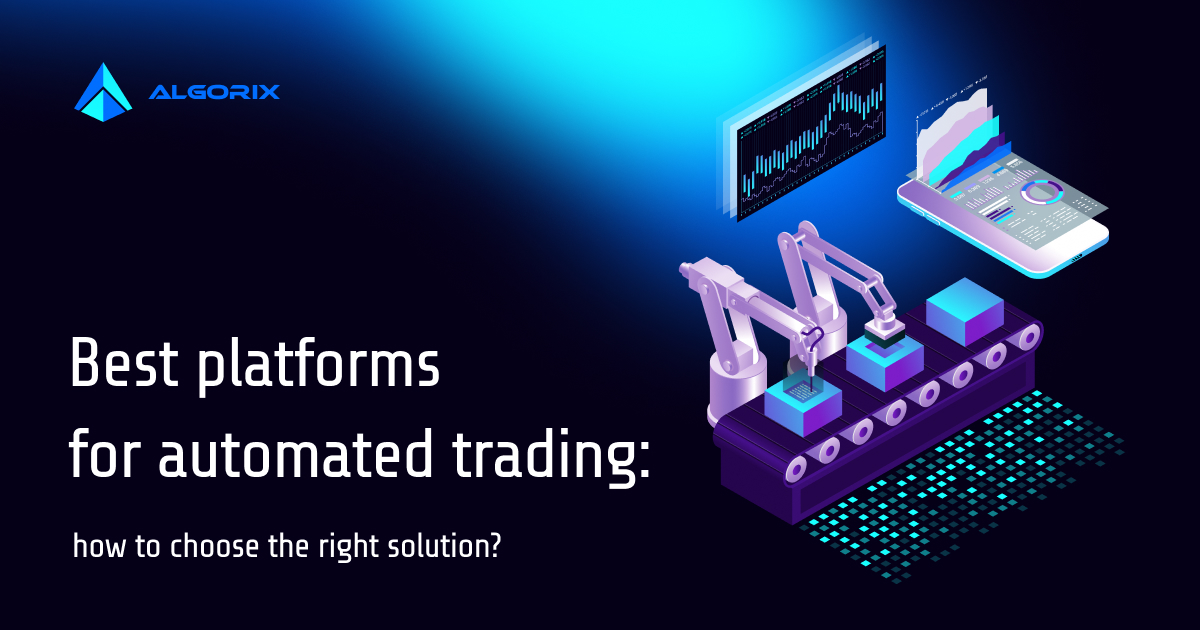Interest in automated trading is increasing, and it’s easy to see why. Every second matters to a trader, and Auto trading technologies can save you precious moments when you need to jump in and grab an opportunity as quickly as possible.
Beyond that, an automated trading system can help to keep emotions out of the equation when you’re making critical decisions. By giving you access to precision algorithms, and tools that help you to spot trends and patterns faster than the average human being, automated trading solutions help users take a logic-based approach to growth.
The algorithms in automatic trading platforms don’t sleep, get tired, or panic during market swings. They’re designed to make calculated moves based on data, execute endless trades in milliseconds, and facilitate sustainable growth. It’s little wonder that the market for automated trading technologies is expected to reach over $4.06 billion by 2032.
Here, we’ll explain precisely what “automatic trading” means in the modern world, explore the pros and cons of using autotrading systems, and share our top tips for improving trading results.
What is Automated Trading?
So, what is auto trading?
Automated trading, sometimes called “algorithmic trading” is a method of participating in financial market trades, like stock and forex trades, using computer programs. In automation trading, algorithm-driven software executes trades on your behalf at lightning speed.
Essentially, you get a computer system that acts as a high-tech assistant throughout the trading process. This system monitors trends, processes market information, and manages trades, often based on pre-determined entry and exit conditions you set within the software.
Automated trading doesn’t eliminate the need for human input entirely. You still need to do your own research and set parameters for trade positions. However, an auto trade system can make it easier for beginners to enter the market, and help users scale their strategy. In fact, many institutional investors use automated software to manage thousands or even millions of shares daily.
Lately, interest in automated trading has increased, with some reports suggesting up to 70% of trades are made by algorithmic bots. That’s because this software can increase the number of trades a user can complete in a specific day, and eliminate human limitations, like emotions and fatigue, which frequently lead to costly mistakes.
Additionally, advanced trading platform options are beginning to emerge to make autotrading more accessible to the masses. For instance, Algorix, one of the world’s leading automated trading systems, is at the forefront of the automatic trading revolution, offering traders a system that prioritizes ease of use, security, and efficiency. Algorix combines AI and operations research (OR) to give traders a seamless, efficient way to trade smarter.
How Automated Trading Systems Work
Automated traders can vary in their functionality, offering access to various tools, resources, and data-driven systems that boost trading efficiency. Most automated trading solutions still work in similar ways on a broad level, however.
After you access an automated trading platform, you’ll need to set various rules for how you want to open and close trades, based on various market conditions. Investors create rules to establish entry and exit points, investment size, and risk management tactics. They also establish criteria for actions that might include stop-loss orders, price levels, or technical indicators like moving averages.
Once your rules are set, the platform or system will monitor the market, and instantly execute trades whenever certain conditions are met.
Algorithms form the backbone of the entire automatic trading process. They can evaluate and process market data and signals in milliseconds, ensuring you can enter or exit positions at the perfect moment. By automating the process of “executing trades”, traders benefit from being able to take advantage of opportunities that may only arise for a few seconds.
Notably though, automation trading doesn’t just save time. One of the biggest benefits of using a software program to automate trading is it helps to minimize emotional decision making.
Fear, doubt, and greed can all cause investors to make dangerous decisions. By relying on strict rules and data, automated systems bypass those emotional pitfalls, making trading far more consistent and, often, more profitable.
Pros and Cons of Automated Trading
The continued growth of the algorithmic trading market is evidence that plenty of traders are seeing benefits from automated systems. Automated trading offers an exciting, tech-driven approach to the markets – but it does have both pros and cons to consider.
If you’re thinking of getting started with automated trading yourself, then it’s important to make sure you know how to weigh both the benefits, and the limitations of using an algorithmic platform.
Pros of Automated Trading
There are a lot of advantages to having computer systems monitor the market for you, and automate trade execution based on specific rules. Saving time and effort on complicated trading processes is just one of them. Investing in automated trading platforms can help with:
1. Increasing order execution rates: Algorithms can execute hundreds or thousands of trades in seconds. This means traders can easily handle multiple accounts and strategies simultaneously and improve order entry speed. Getting in and out of a trade a few seconds earlier can make a huge difference to the outcomes or results of the trade. Automated systems ensure you don’t lose any precious time.
2. Minimizing emotions: Emotions can be dangerous in the trading environment. Automated systems can reduce the risk of traders making decisions based on fear or greed. They push traders to follow consistent rules and preserve discipline, even in volatile markets. This can help lead to better profit margins (and reduced stress).
3. Enabling backtesting: Backtesting is a key feature enabled by automated trading platforms. This allows users to test their strategies based on historical data. They can simulate trades based on past market conditions, and evaluate the effectiveness of a strategy before they contribute any capital to a trade.
4. Improved diversification: Automated trading with a system like Algorix can empower traders to diversify their assets across a range of assets, like stocks, commodities and forex. Since assets often behave differently in various marketing conditions, spreading investments across multiple markets can help to minimize potential losses.
Cons of Automated Trading
Though an auto trade system can be valuable to any market strategy, there are risks and challenges to overcome too. Even the best automated trading systems can still encounter issues, and pose problems for beginners. Some of the biggest hurdles include:
1. Technical failures: An automated trade system can be vulnerable to various technical malfunctions from hardware failure to software glitches and lost network connections. These issues can lead to incomplete executions and missed opportunities, which could occasionally result in significant losses.
2. Constant monitoring: Using an automated trading platform doesn’t mean just putting trades on autopilot and forgetting all about them. Traders need to track their systems to watch for issues with connectivity, power losses, and computer crashes. Monitoring the system is how you ensure you can identify problematic events and respond quickly.
3. Over-optimization: Traders often refine their strategies through backtesting, which is great. However, there’s a risk of “over-optimization”. Just because a strategy works well based on historical data and looks good on paper, doesn’t mean it will translate to success in real-world market conditions.
4. Technical knowledge: Effective automated trading has previously relied heavily on a solid understanding of coding, algorithm design, and software management. This has made it harder for a beginner to get involved in the landscape in the past.
The good news for those who do want to automate trade execution, while mitigating risks is that new platforms are emerging to address these challenges. The Algorix platform, for example, offers access to a user-friendly environment that reduces the need for technical knowledge. It also comes with robust monitoring features, and in-depth insights traders can use to reduce the risk of critical issues harming their trading success.
Setting Effective Trading Rules for Automated Trading Success
Although the right platforms can make it easier for beginners to get started with autotrading, you still need to learn how to automate trading effectively, with the right rule systems. Your automation trading rules will determine how effective your strategy really is.
Platforms like Algorix come with strategy-building wizards to help streamline how you automate trade actions. These wizards allow traders to choose technical indicators and parameters that define when trades should open or close. Common indicators include moving averages, price levels, and volume signals.
The beauty of being able to establish these rules easily is that even beginner traders can trigger immediate actions in response to market conditions. By automating responses like stop-loss orders or profit targets, traders can limit risk while capitalizing on opportunities without second-guessing.
This structure also ensures that trades align with a consistent strategy, minimizing the impact of emotions on trading decisions.
Although many beginner traders rely heavily on pre-defined rules to automate trading, some more experienced traders prefer to program their own custom indicators and strategies. Custom strategies allow traders to combine multiple indicators or create new ones to fit specific market scenarios. For instance, a custom indicator might involve combining moving averages with relative strength index (RSI) levels to identify entry points in trending markets.
However, designing these strategies requires technical precision and a deep understanding of how different indicators interact. Misconfigured rules can lead to unexpected outcomes, so it’s crucial to test and refine custom strategies using backtesting tools before deploying them in live markets.
How to Avoid Scams in Automated Trading: Essential Tips
Aside from the challenges already mentioned above, one of the key issues that automated traders need to watch out for is trading scams. Scams are common in the trading world, and the best way to protect yourself is to remember that if something seems too good to be true, it usually is.
Before you invest any funds into a trade, research and inspect the trading accounts you’re using. Ask questions about the platform’s fees, features, and the security of your data. Researching the automated trading system is also important. Read the terms and conditions carefully to make sure you know what you’re agreeing to, and identify any hidden fees or restrictions.
Joining automation trading forums and reading up on reviews of auto trading systems can give you valuable insights into the experiences other traders have. This could help you identify red flags before you share your funds or details with an automated trade system.
It also gives you a chance to learn more about a platform’s approach to delivering customer service and support. That can be particularly useful if you’re a beginner getting used to an auto trade system for the first time. Additionally, it’s worth looking for trustworthy vendors that offer trial periods.
A free trial period will allow you to test the automation trading system for yourself, familiarize yourself with the features, and make a decision without an upfront financial commitment.
Discover the Benefits of Auto Trading
Automated trading is an incredible option for beginners in the market, and veterans who want to scale their trading strategy. Automation trading is efficient and quick, helping users to execute orders and actions rapidly, so they can seize incredible opportunities.
Beyond that, the right automated trading platform will help to remove emotions from the trading equation, allowing you to make more data-driven decisions about your financial future.
Of course, it’s still important to remain cautious when you’re venturing into this landscape. Automated trading platforms are still vulnerable to technical flaws, and market conditions can shift unexpectedly, impacting their performance. Continuous monitoring, and a commitment to developing the right strategy over time is crucial to boosting your chances of success.
Algorix, the leading AI and OR-driven trading platform can help you discover the benefits of automated trading, with minimal risk. This secure, reliable, and intelligent platform is both easy to use, and packed with crucial tools that give you the power to optimize your portfolio at speed.
Discover the benefits of automated trading for yourself, and unlock new levels of financial success, with the Algorix trading platform.
